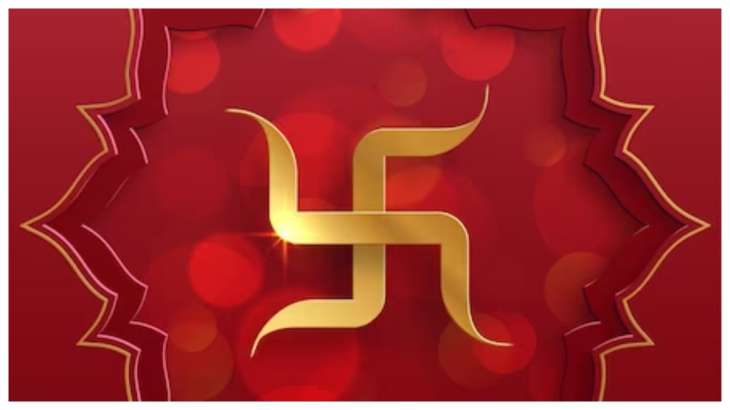
Australia will ban the swastika symbol: Attorney-General Mark Dreyfus said on Thursday that the Australian government is planning to pass legislation to ban swastikas and other Nazi symbols nationwide. Dreyfuss said that federal legislation would go ahead by outlawing the trade of such materials, even though most Australian states already forbade such Nazi symbols.
next week in parliament
“There has been an increase in such violent far-right activities. We think it is time to have a federal law that I will bring to parliament next week,” Dreyfus told Nine Network television. “We’ve got the responsibility of import and export. Would like to see an end to the trade in any item containing those Nazi symbols.”There is no place in Australia for spreading hatred and violence.”
will not affect the use of the swastika for Hinduism
Displaying symbols for religious, educational or artistic purposes would be included in the range of exclusions from the ban. This will not affect the use of the swastika for people practicing Hinduism, Buddhism and Jainism.
history of swastika
The swastika is synonymous with fascism in the West, but it goes back thousands of years and is used as a symbol of good luck in almost every culture in the world. The word swastika comes from the Sanskrit svastika, which means “good luck” or “well-being.” Thus Swastik is considered a symbol of auspiciousness and good fortune.
The symbol has been used by Hindus, Buddhists and Jains for millennia and is generally considered an Indian symbol. Its positive and historical associations encouraged early Western travelers to begin using it at home in Asia. The swastika was widely popularized as a good luck charm in the early 20th century.
Swastika as a Nazi symbol
It was used by US military units during World War I. However, after the Nazis came to power in Germany in the 1930s, the meaning of the swastika was forever changed and most of these beneficial uses were lost.
During their rise to power, the Nazi Party in Germany wanted to adopt a new flag. The swastika or Heckenkreuz (hooked cross in German) rotated 45 degrees clockwise was seen as an appropriate symbol. In 1920, Hitler formally adopted the swastika as the symbol of his National Socialist German Workers’ Party (Nazi Party). The Nazis used the Hakenkreuz (Nazi swastika) to represent their notion of Aryan identity. In his 1925 work Mein Kampf, Adolf Hitler wrote: “Meanwhile, after innumerable attempts, I myself had determined a final form; a flag with a red background, a white disc, and a black hooked cross in the middle.” . After a long trial I found a definite proportion between the size of the flag and the size of the white disc, as well as between the size and thickness of the hooked cross.”
Later, the swastika was banned in Germany at the end of the war and Germany unsuccessfully attempted to enforce an EU-wide ban in 2007.
Swastika is a Hindu religious symbol
The swastika is commonly seen in India today. A symbol on the walls of temples, houses, vehicles and above entrances and doors. It purely means auspicious and welcoming. Unlike the black Heckenkreuz of the Nazis, the swastika used by Indians is usually red or yellow and is not tilted to the right, and has dots at each corner, which are believed to represent the four Vedas (Vedas). Rig, Yajur, Sama). , Atharva).
For Buddhists, the swastika symbolizes the auspicious footprints of the Buddha. For Jains, the swastika is a symbol of the seventh Tirthankara (literally “ford-maker,” one of the liberated souls who show the way to others in the Jain tradition), symbolizing one of the four places a soul is reborn in. Maybe in the cycle of birth and death.
(with AP input)